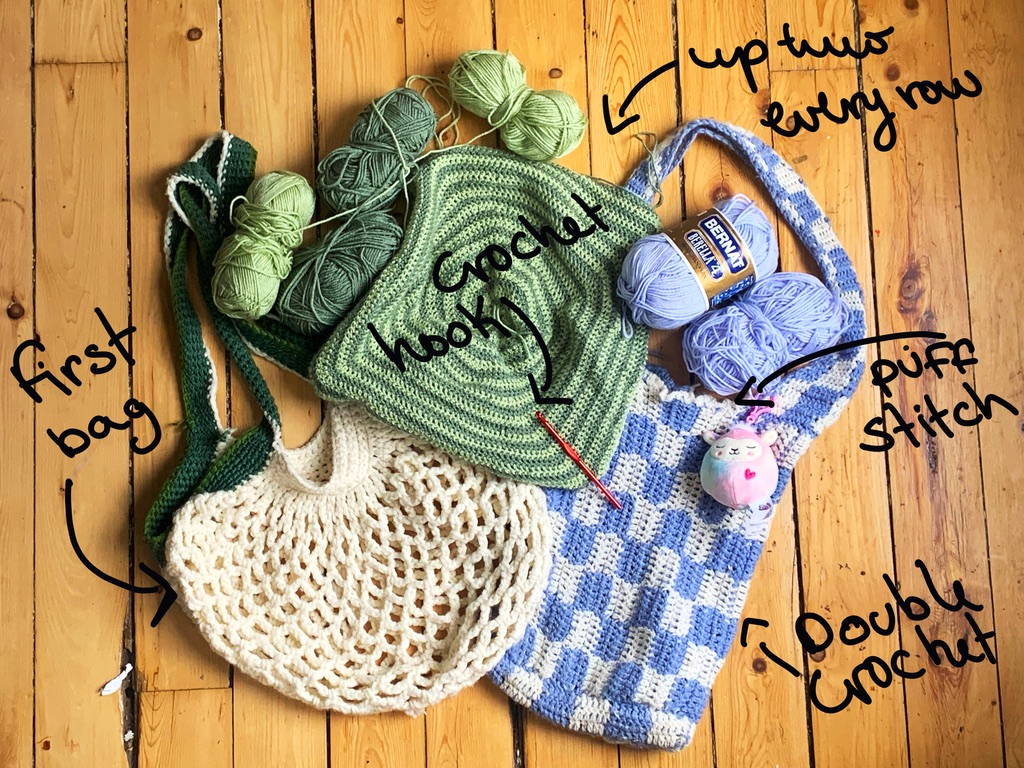The unconventional way I got through Zoom learning: crochet
When I was young, my grandma taught me to knit for the first time. I was five years old, sitting on her lap on a cold December day, when she first introduced me to the sport. She held my hands in hers as the needle weaved through the yarn, creating a line of crooked stitches in fluffy red wool.
It wasn’t until years later, a little after I turned 18, that my sister gifted me two pairs of knitting needles and a couple bundles of bright coloured yarn, when I finally picked up the hobby for good.
A couple months before the great gift that started it all, I had received a diagnosis for hyperactive ADHD, coupled up with chronic anxiety — I was in for the ride of my life.
I swiftly moved from making simple tension squares and knitting hand cloths to more intricate projects like… scarves. But in all seriousness, I always got too overwhelmed by having to handle the two needles required for knitting, and never really understood the concept of tougher projects. My goal with knitting was to create something I could enjoy, wear, and pass down, just like my grandma had done for me. But the works of art I was knitting weren’t gonna cut it.
One day, I was thrifting (as per usual), and stumbled across the wall of random stuff that Value Village packages up in little plastic baggies. These are sometimes filled with mangled Barbie dolls, scraps of a McDonald’s Happy Meal toy… you get the point. But this particular day, I decided to intentionally look at what was there, and found a plastic bag filled with crochet needles, all for $3.75.
I decided “Why not give crochet a shot,” making it the 17th hobby I would try out that year. It quickly became a love affair.
For those who don’t know, crochet is knitting’s little sister; it requires only one needle, or “hook,” and some yarn, or any material weaved into a thread that you can hook onto.
At first, it was just me, my laptop, my hook and my yarn. I learned all the basics; slip stitch, single crochet, double crochet, half double crochet, how to chain, the magic circle, and so on. I started making hats, bags, coasters, and different fun patterns of granny squares.
Instead of overwhelming me, I felt I was able to grow within this form of creative expression, and to this day it has become one of the only hobbies that I have stuck with.
People with ADHD often struggle with holding onto projects, hobbies, or habits you’re either trying to pick up or kick. You quickly get sidetracked by small things that are normal parts of life, and so it’s hard to stay focused and committed to one thing that you love.
When March 2020 hit, and the unthinkable happened, my first year of university was shifted into an environment where being actively engaged with the class material was extremely difficult for me, and pretty much everyone else. I began classes online, and finished my semester cosplaying as a hermit in my partner’s basement, eating junk food and squinting whenever I was confronted by daylight.
When September rolled around, I was ready and excited for my second year of school. In the journalism department, many of the classes are smaller than what you’d expect in a university setting, with most of them consisting of around 20 people. At least I wasn’t in an online class with over 200 participants — sorry sociology majors.
Still, they were long lectures; I realized I wouldn’t get through them if I got distracted by every noise, feeling, thought or impulse I had. However, I am a grown-ass woman, and I refuse to own a fidget spinner. So I started to crochet during class.
All of a sudden, I could get through the two hours of a two-hour lecture and actually grasp the content. My hands were busy, and somehow that opened up my ears to absorb what was being said. I was no longer held captive by my own thoughts, because all I was doing was thinking about my next stitch while I listened to what sounded like a slightly boring podcast on business reporting — how educational!
Even though I had friends kind enough to send me their notes, professors who would share slideshows with me so I could catch up if I needed to, or revise something if I had been too distracted — I didn’t need it. After learning to crochet, I was able to concentrate and absorb information properly. This has been the best tool I have found to help me thrive in the online environment.
Now all I have to figure out is how to get professors to allow me to crochet in class… I am only kind of kidding.
Photoraph by Juliette Palin
